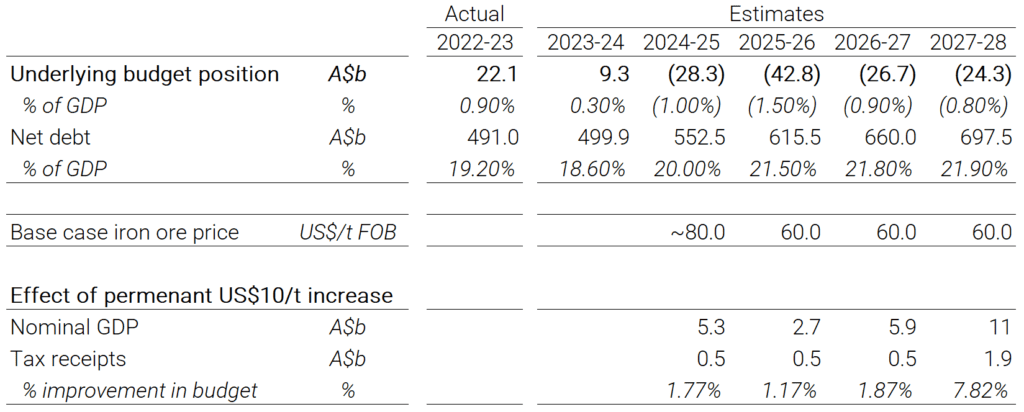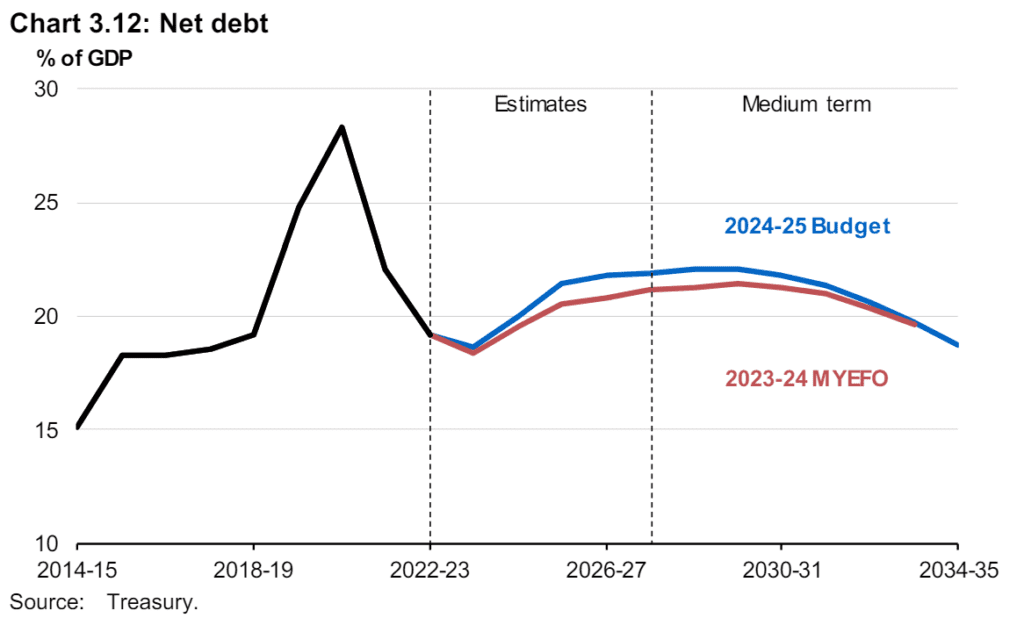After weeks of discussion on the outcomes of the Federal Budget, Australians were provided relevant opportunity to decipher changes and updates for the coming years. Frais Capital Research Analysts’ Harry Davison Petch and Lu Huang dissected the Federal Budget to understand and communicate the outlook for Australians.
As Harry Davison Petch notes,
With the labour budget released yesterday evening, Treasurer Jim Chalmers unveiled an estimated A$9.3b surplus this financial year due to an unexpected surge in tax receipts, but an estimated A$122.1b deficit thereafter to 2028 due to core spending initiatives.
1) Easing cost-of-living pressures – highlights include $300 energy relief per household and $325 per small business, alongside $1.9b in rent assistance over 5 years.
2) Building more homes for Australians – highlights include further $1b available to states & territories to boost housing supply, an additional $423.1m over five years for social housing and homelessness services and $16.5b over 10 years for priority road and rail infrastructure projects.
3) Investing in a Future Made in Australia – $22.7b over the next decade to encourage private sector investment required to maximise the economic and industrial benefits of the net zero transformation including a ~$1.5b p.a production incentive across the 31 critical minerals sites across Australia.
4) Strengthening Medicare and the care economy – $2.8b to continue significant reforms to strengthen Medicare, including $1.2b packaged to take pressure off hospitals with a focus on better health outcomes for older Australians, alongside $3.4b over five years for new and amended pharmaceutical listings.
5) Broadening opportunity and advancing equality – moving forward on recent reports and recommendations Working for Women: A Strategy for Genre Equality and the National Plan to End Violence against Women and Children 2022-23.
Some are debating the potential response from the RBA with inflation being mechanically pushed downwards by the cost-of-living measures contrasting with such significant spending initiatives and future deficits. However, Treasury’s base case iron ore price forecasts sit down at the US$60/t levels despite the current elevated level and industry consensus sitting closer to US$100/t, which as demonstrated in the table below would have significant effects on the underlying balance – we will have to wait and see.
Modestly positive for equities as measures help offset the weakness in retail spending and domestic demand associated with higher interest rates.

Furthermore, Lu Huang shares further insight on the deficits and surplus debate for the years ahead.
After a short-lived series of government surpluses, the Treasury is expecting consistent budget deficits from 2024-2025 onwards. Net interest payments are expected to grow from 12.3% of GDP in 2023-24 to 18.8% by 2025-26. Net debt is projected to peak in 2026-27 (see graph below). Whilst debt levels in Australia are lower than comparable economies, rising government debt should be given attention as it can drag on economic activity – higher unemployment, lower wages, and fewer opportunities.
However, deficit estimates are sensitive to cyclical factors – particularly commodity prices. For context, iron-ore is Australia’s largest export by value, representing 18% of the total value of goods and services exports in 2022-23.
The Treasury has opted for conservative estimates for commodity prices that contributed to the expected deficit figure. They expect commodity prices to return to long-run assumptions, forecasting $US60 a tonne compared to consensus $US100. Strength in commodity prices have the potential to swing the deficit into a surplus – a $10 increase in iron ore prices will increase nominal GDP by $5.3bn in 2024-25.

To conclude, for further insight on a daily basis, listen to Siobhan Blewitt on ABC Breakfast, 774 AM with Sammy J, 6:35am weekdays, or read more from our Frais Capital weekly updates at fraiscapital.com/insights.



